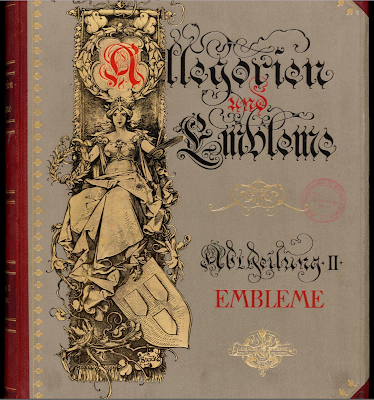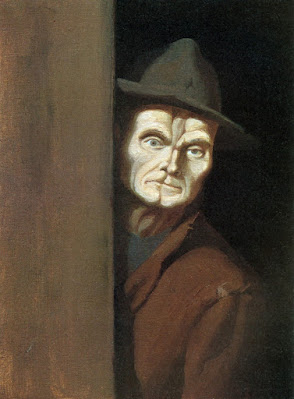If you already had ...
An oval astronomical compendium.
It comprises a wind-rose, a table of latitudes, an equinoctial sundial, a compartment to hold a compass (now missing), a shallow compartment the purpose of which is unknown, and a nocturnal.
The wind-rose is marked with the names of 32 directions in a pattern used on other instruments of the same period.
The latitude-table lists 25 major European cities in England and on the continent with latitude values as known from contemporary sources.
The equinoctial sundial consists of an hour-ring engraved on both sides for the two halves of the year, and a gnomon, set by a quadrant with a latitude scale.
The hour ring is engraved with the name of the maker as 'R Grinkin Fecit'.
The nocturnal is constructed in a way first used by Humfrey Cole in 1590.
... and if you had subsequently acquired ...
GOLD PAIR-CASED VERGE CLOCK-WATCH
LONDON, 1693
SIGNED: 'D. Quare London 0233'
The celebrated London watchmaker Daniel Quare was a Quaker, born in Somerset, who became a Brother in the Clockmakers' Company in London in 1671, later serving as Master of the Company in 1708.
Around 1715 he went into partnership with one of his former apprentices Stephen Horseman, and, following Quare's death in 1724, Horseman carried on the business until he was declared bankrupt in 1733.
Quare's reputation was built on fine clocks and watches as well as a series of high-quality barometers, of which several survive.
This does not mean that Quare made all the pieces himself. Like so many makers of the time he doubtless relied on other craftsmen to supply his materials. It is known, for instance, that he used the expertise of Joseph Williamson to produce a number of sophisticated longcase clocks with equation of time indication.
Quare was not only involved in horological pursuits; as well as owning land, he had a half share in the trade of the East Country Company with a fellow watchmaker, Francis Stamper, and also had land interests with the Quaker community in America.
This typical example of Quare watchwork shows why London was beginning to lead the world in watchmaking towards the end of the seventeenth century.
Clock-watches, which automatically strike the hour like a clock, had existed since the early years of the watch in the first quarter of the sixteenth century. However, in London, following the introduction of the balance spring, their popularity seems to have been in decline.
The quality of this watch is self-evident, with a finely pierced and engraved balance cock and tulip-form movement pillars.
To control the striking, there is a small silver count wheel, which measures out the blows struck by a hammer on the bell housed inside the back of the inner case.
The finely fashioned gold dial matches the gold pair-cases made for Quare by William Jaques, whose mark, 'WI', appears in both cases. Jaques was one of the leading casemakers in London at the end of the seventeenth century, and ran one of the more prolific workshops of the time, making cases not only for Quare but also for many other makers, including Joseph Windmills, Simon Decharmes and John Bushman. Born around 1665, in 1679 Jaques was apprenticed in the Clockmakers' Company, first to John Wright and then to Nathaniel Delander. In 1687 Jaques became a Freeman in the Clockmakers' Company and went on to serve as Master of the Company in 1716. His address was Angel Court, Snow Hill. When he died in 1719, the business was carried on by his widow, Sarah, who went into partnership with the casemaker John Lee, one of Jaques's former apprentices.
The cases of this watch show the high-quality workmanship of William Jaques and his workshop. To allow the sound of the bell to escape, the outer case bezel is pierced with a series of graded roundels which alternate with baskets of flowers. The decoration of the case band echoes this design, and carries four portrait busts, two of them possibly of King William III and Queen Mary.
The inner case is finely pierced with foliate scrolls, strapwork and birds and, in the middle of the back, a shield of arms: 'vairé argent and sable, a fesse gules, crest: a stump of a tree proper raguly argent. 'These are the arms of the Bracebridge family, of Atherstone Hall in Warwickshire, but also with branches in Lincolnshire and Suffolk. However, the style of the shield suggests that the arms 'were probably engraved at a later date and are not those of the first owner.
Another clue to the history of the watch is a scratched inscription under the bell, which reads 'T. Dutton, Walsall Dec. 1830'. This suggests that the watch was repaired by Thomas Dutton, a clock- and watchmaker who was married in Walsall, Staffordshire, in 1815 and worked there until 1865.
... and if you became concerned about some seasonally divergent anomalies between the old expensive sundial and your expensive new clock-watch ...
... then this might help to calm your anxiety and agitation ...
The trade card of Richard Street, clockmaker, at ye Dial and Two Crowns, over against St. Dunstan's Church in Fleet Street, London; clock face with two crowns above, with large equation of time table below.

.jpg)


-1500x1500.jpg)









.png)
.png)
.png)
.png)
.png)
.png)

.png)
.png)
.png)
.png)
.png)
.png)
.png)








.jpg)

.jpg)












.jpeg)





